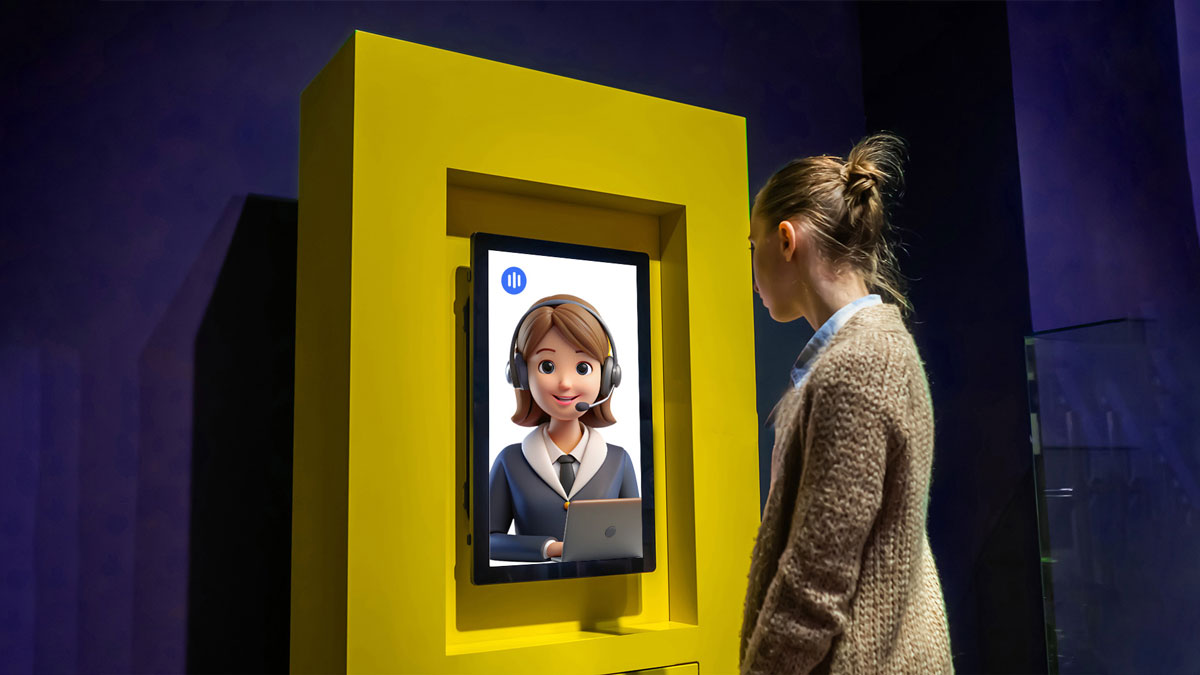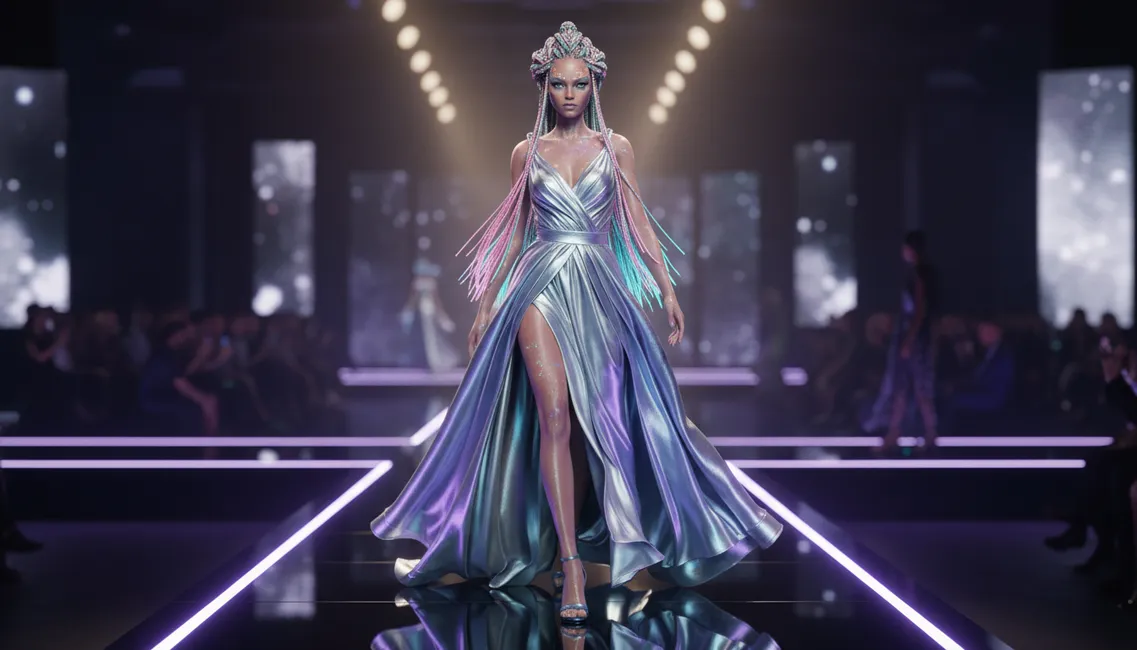
AI digital humans—also known as AI avatars or AI characters—are not here to replace us, but they’re certainly bridging the gap.
Once confined to science fiction, these advanced entities are now finding their way into our everyday lives, thanks to breakthroughs in technology.
Their value is undeniable, as they are transforming industries from education and entertainment to customer service, and more.
In many ways, it can be said that AI digital humans represent a new way of human-machine interaction. These entities feel both intelligent and personalized, and they create experiences that feel uniquely human-like.
In this article, we’ll discuss what AI digital humans are, why they matter, and how they’re created. We’ll also highlight some real-world examples and applications.
Understanding AI Digital Humans
Let’s start by defining AI digital humans and then explore the key technologies behind them, followed by real-world examples of their use.
What is an AI Digital Human?
An AI digital human is a virtual, AI-powered character that acts like a human.
An AI digital human is not just about mimicking human interactions but also includes a comprehensive set of AI technologies that enable it to understand, respond to, and learn from human input. This includes emotional intelligence, contextual understanding, and the ability to engage in complex dialogues, not just surface-level interactions.

Also, keep in mind that we’re talking about virtual AI characters. They could appear in augmented or virtual reality, but an AI-powered robot isn’t a digital human. Stay tuned for the technologies that power these realistic digital people!
What Technologies Does an AI Digital Human Use?
AI characters are sophisticated, and so are the many integrated technologies behind them. There are four that stand out in particular:
Machine Learning
Any artificial intelligence is trained by these algorithms. They make the AI form its own thought processes and become intelligent. Many of these algorithms should also run while the digital human is in use, allowing it to learn and adapt over time.
Natural Language Processing (NLP)
This is the technology that allows an AI (in this case, the digital human) to understand and interpret spoken or written language and formulate relevant and meaningful responses.
Speech Synthesis
A lifelike AI digital human also needs a lifelike voice, so speech synthesis is also a great contributor to the AI’s realism. (You’ve probably come across text-to-speech or even speech-to-speech technologies. Speech synthesis is the broader umbrella term that covers all of these technologies and many more.)
Rendering Engine
A virtual digital human needs 3D modeling software to appear realistic. The challenge here is the significant computing power required to render and display the character in real-time, much like what’s needed in video game engines.
Rendering engines do play a crucial role in real-time visualization, but it’s also essential to discuss the role of these engines in ensuring the photorealistic appearance of AI digital humans. This involves complex tasks like light simulation, shadow casting, and texture mapping, which are critical for creating a lifelike experience.
Animation & Movement AI
Movements in AI digital humans rely on a mix of advanced technologies. These include procedural animation systems, physics-based simulations, and deep learning models trained on human motion. Together, these systems enable lifelike body language, facial expressions, and gestures in real-time, responding dynamically to the AI’s thoughts, speech, and even interactions. Rendering engines then process this data to animate the virtual character.
Computer Vision
While computers don’t ‘see’ like we do, they can use cameras to detect and respond to facial expressions and gestures.
If that sounds complex, you’re not alone! Think of it like composing a symphony, where many elements must work together in perfect harmony to create a fluid experience.
AI Digital Human Applications
This brings us to a key use case: creating better interactive experiences. Today, customers and their satisfaction are all that matters, so businesses strive to be as engaging and supportive as possible.

AI digital humans are playing a growing role in this space, serving as always-available customer service agents, healthcare consultants, or even interactive educators.
One of the most exciting applications of AI characters is in entertainment. From product launches to virtual tours and immersive VR worlds, they add an engaging twist to almost anything. In the world of AAA video games, AI-driven characters are at the heart of the ongoing battle for ‘who has the most intelligent non-playable characters’—and to be honest, that competition shows no signs of slowing down!
And let’s not forget, AI technology is continuously advancing. So, who knows what more can AI digital humans bring to the future digital landscape?
How to Create an AI Digital Human
Thinking about reaping the benefits? You should follow several key steps, each of which requires careful planning and execution, as well as hiring the right people.
Below are the five general steps we recommend to ensure you create an effective, engaging, high-performance AI digital human.
Step 1: Define the Purpose
Everything in a successful business starts with a plan—and you already know that. But what you need to pay more attention to is how that plan adapts.
When it comes to creating an AI digital human, it’s important to understand that the process can differ significantly based on the role you envision for it. While the overall steps remain the same, the tools, design elements, and infrastructure will vary according to their function.
Is your AI digital human intended to be a virtual guide, or a brand ambassador? A tutor, or a companion? Defining your objectives at this stage is extremely important, as they will shape the rest of the process and help you tailor the character to meet specific user needs and expectations.
Step 2: Choose the Right Technology
Remember the five core technologies we mentioned earlier? We talked about machine learning, natural language processing, rendering engines, speech synthesis, computer vision, and motion capture.
Ideally, your AI character needs to utilize all of them, but you can skip computer vision if your digital avatar isn’t required to ‘see’ the audience, like a brand assistant on your website that doesn’t need webcam access.
The next step is determining the AI models, software, and hardware required for your specific needs. Since it’s difficult to provide exact requirements upfront, we recommend using the following framework and evaluating each component based on your defined objectives.
Consider these essential elements when developing a high-quality AI digital human:
- High-quality 3D Modeling & Animation
High-end software like Maya or MotionBuilder is often employed to create detailed 3D models and lifelike animations. - Advanced Rendering Engine
Rendering engines such as Unreal Engine are frequently used to bring animations to life, as they offer real-time rendering. - Content Generation AI
To generate original content, AI models like GPT-4 or Claude are perfect. You are definitely not seeking pre-existing material, hence, these models allow the AI to develop new information based on input data. - Professional-grade Text-to-Speech System
A range of advanced text-to-speech systems is available online, and they offer hundreds of voice options that you can easily choose among. - AI Animation System
Systems like DeepMotion AI or NVIDIA’s Audio2Face are there to provide realistic movement and facial expressions, and more importantly, help the digital human interact a lot more naturally.
Once you’ve outlined your needs, the next step is to inquire about the compatibility of these services with your existing systems, their pricing, the required computing power, and the team members involved.
Step 3: Design & Development
This is where both the visual and functional aspects of your AI digital human come to life. The character design phase defines not only the AI’s appearance but also how its personality shines through. This includes everything from the initial sketches to details like eye color, facial expressions, and gestures.
Each specific aspect contributes to how the AI engages with the audience. And yes, the design is crucial, as it’s the first impression your audience will have—so it must perfectly align with your objectives and of course, user expectations.
Voice and speech synthesis are also essential components of this step. The voice of your AI digital human should be lifelike and capable of conveying a wide range of emotions and tones. No matter how good your speech synthesis engine is, you’ll most likely need to fine-tune things for the character’s voice to align with its appearance and role in the business. It’s also essential for a great user experience, so don’t cut corners on the process!
Step 4: Training, Testing, & Iteration
You don’t always need to train an AI model from scratch—many providers can customize existing models for you.
However, even a generic AI model must be familiar with your company’s specific operations. Think of it as an onboarding process: provide the AI with the right datasets and you’ll make sure it performs properly across various scenarios.
Also, don’t forget testing and iteration. These are critical steps that ensure your AI digital human works as intended. They’re meant to detect limitations, issues, and inaccuracies to bring to the developers and find solutions for them.
User feedback is always valuable in testing, so feel free to call on a limited number of loyal audience members to test it after your team has completed its exhaustive tests.
Remember that your AI character also needs to evolve. Double-check that everything in the learning process works, too.
Step 5: Deployment & Maintenance
So, you’ve developed your AI digital human, designed it for your audience, and thoroughly tested everything. Now is when you launch it.
Like every other product or feature, an AI avatar also needs its own launch strategy. Consult with the marketing team to figure out effective campaigns, strategies, and even user training sessions to maximize engagement and adoption. Ineffective marketing can kill any new, shiny thing. Take this step very seriously.
Don’t forget that your AI digital human will require ongoing maintenance. Technical issues will inevitably arise, user feedback will need addressing, and without regular updates, your AI could quickly become outdated. Continuously monitor the AI’s performance and have a plan for each maintenance scenario. Cater to user needs and stay on the edge of technology, and you’ll be valuable and relevant for a long time!
Examples of AI Digital Humans
AI digital humans are transforming different industries as you’re reading this. Below are some notable companies with amazing AI digital humans in various fields.
NVIDIA ACE
NVIDIA is a leader in graphics processing and AI technology. They have also made significant strides in the realm of digital humans with their Avatar Cloud Engine or ACE. This groundbreaking platform is designed to create and deploy interactive AI avatars, pushing the boundaries of what’s possible in virtual human interaction.
NVIDIA ACE is impressive in many ways, including its ability to generate real-time conversations with AI digital humans. As we’ve mentioned, these AI avatars will understand and respond to natural language with gestures and facial expressions. And who could forget Toy Jensen’s unforgettable Jingle Bells performance last Christmas?
Some key capabilities of NVIDIA ACE include:
- Natural Language Processing: ACE-powered avatars can understand context and nuance in human speech, allowing for natural, fluid conversations.
- Real-time Animation: You won’t see any lags in these avatars. Their movements are as real-time as your own!
- Customizable Appearance: Developers can create unique avatar appearances to suit specific needs or brand identities right from the platform.
- Multi-language Support: It’s easy to focus only on English, but ACE can generate conversations in multiple languages for businesses with a global audience.
- Integration with Other NVIDIA Technologies: NVIDIA has become a true giant with the AI boom, and ACE can be combined with other NVIDIA tools like NVIDIA Omniverse. This allows you to offer more immersive experiences!
Here’s how NVIDIA ACE is applied in gaming—see it in action for yourself:
UneeQ
UneeQ is another major player in the digital human race. They offer a platform for creating and deploying highly realistic AI-powered virtual beings.
Some of UneeQ’s unique projects include:
- Sophie: A digital human working as a conversational assistant. Literally, someone you can talk to!
- Dani: An AI assistant for UBS, a major bank, providing a personalized experience for customers who need financial information and technical support.
- Nola: A virtual brand ambassador for Noel Leeming, a retail electronics chain, helping customers find what they need through human-like interactions.
UneeQ’s digital humans are highly realistic, especially when it comes to conveying emotions in facial expressions or voice. The company’s platform also allows you to customize your digital humans for your specific use case and brand identity.
See this video where two UneeQ digital humans have a conversation about taxes:
Deepbrain AI
Deepbrain AI is a South Korean company that has made significant strides in the world of artificial intelligence, including hyper-realistic AI avatars. Their primary focus is AI-generated videos, but their digital humans are also nearly indistinguishable from real people.
The people are Deepbrain AI pride themselves on their digital humans having these characteristics:
- Very Natural: This means no obvious visual cues are telling you that the person you’re talking to is an AI!
- Multilingual: They support over 80 languages, from English to Vietnamese.
- Cross-platform: They have developer-friendly Software Development Kits and can be deployed anywhere from the web to the metaverse.
Deepbrain AI’s technology stands out specifically for its video content, which has a host of applications in every industry. You can see one of them in action below:
UNITH
Here’s another international player with hyper-realistic AI avatars, but with a twist. We thought the last example in the article could be a little more interactive, so this time, instead of reading about the company’s capabilities and watching a video, we’ll just introduce you to Zoe, a conversational assistant.
The Future of Digital AI Humans
So, what happens now?
As technology continues to advance, we can expect to see even more realistic and capable digital humans. As you may have noticed, today’s models are far from flawless. So, future developments in the field may include enhanced graphics, better displays of emotions, a more nuanced understanding of context, and much more. It only gets better!
As these digital beings become more advanced, it’s essential to consider the ethical implications of their development and use. Privacy, consent, and the potential impact on human employment remain unresolved issues—concerns we began this article with. These questions must stay at the forefront of our minds as we continue to innovate, and ultimately, we must strive for a collective consensus on these matters.
Conclusion
In conclusion, AI digital humans represent a fascinating convergence of artificial intelligence, computer graphics, and human psychology. These sophisticated virtual beings have the potential to revolutionize how we interact with technology, providing solutions across industries.
From offering technical assistance to enhancing customer experiences, AI digital humans are poised to transform the way we access information and services in the digital age.
One of the most powerful and popular applications of this technology is in social media marketing. To learn how these digital humans are transformed into online personalities, read the complete guide to virtual influencer marketing.
If you’re looking to integrate a digital human into your marketing strategy, we’re ready to guide you at every stage. Our team of experts will first work closely with you to determine if this approach is the right fit for your brand and how to strategically implement it for maximum impact.
From concept to execution, we’ll oversee the entire process, including design, activation, and launch—ensuring your digital human captivates audiences and creates a long-term buzz.
With AI engineers, creatives, and strategists by your side, we’re here to provide expert guidance and make sure your digital human initiative becomes a standout success.
Additionally, incorporating our comprehensive AI advertising services can further amplify your digital human’s impact, ensuring it effectively engages and resonates with your target audience
Feel free to reach out to our team, and we’ll tackle it together.
Arya




I’d love to incorporate a digital human into my business. Could you share how the process works to get this service?
Sure! Check out the process on this page: Virtual influencer agency
What are the key factors to consider when defining the purpose for an AI digital human in my business?
Key factors include aligning the AI with your brand, setting clear goals, connecting with your audience, and maintaining consistency. Consider consulting an expert or digital human agency to refine these needs.